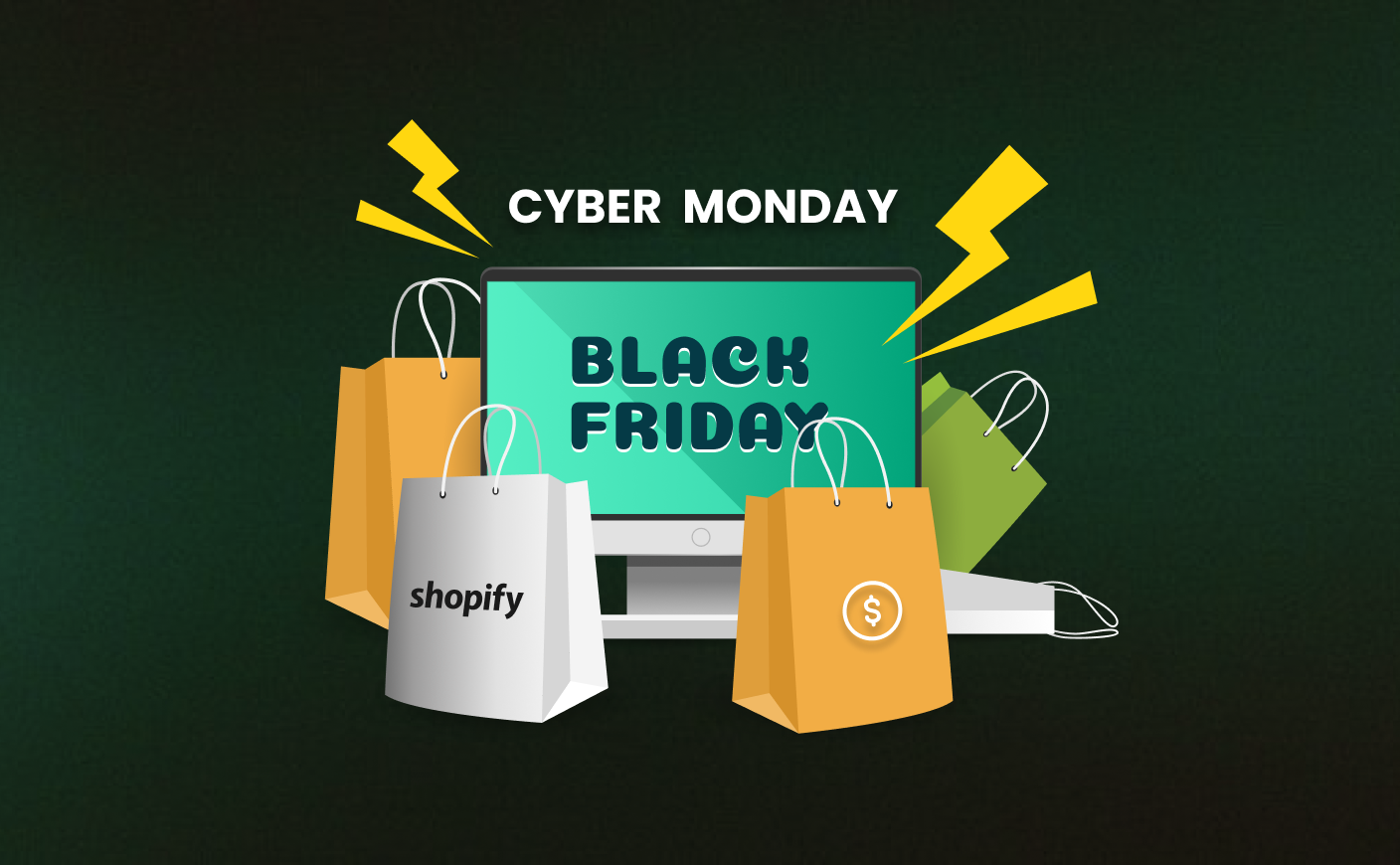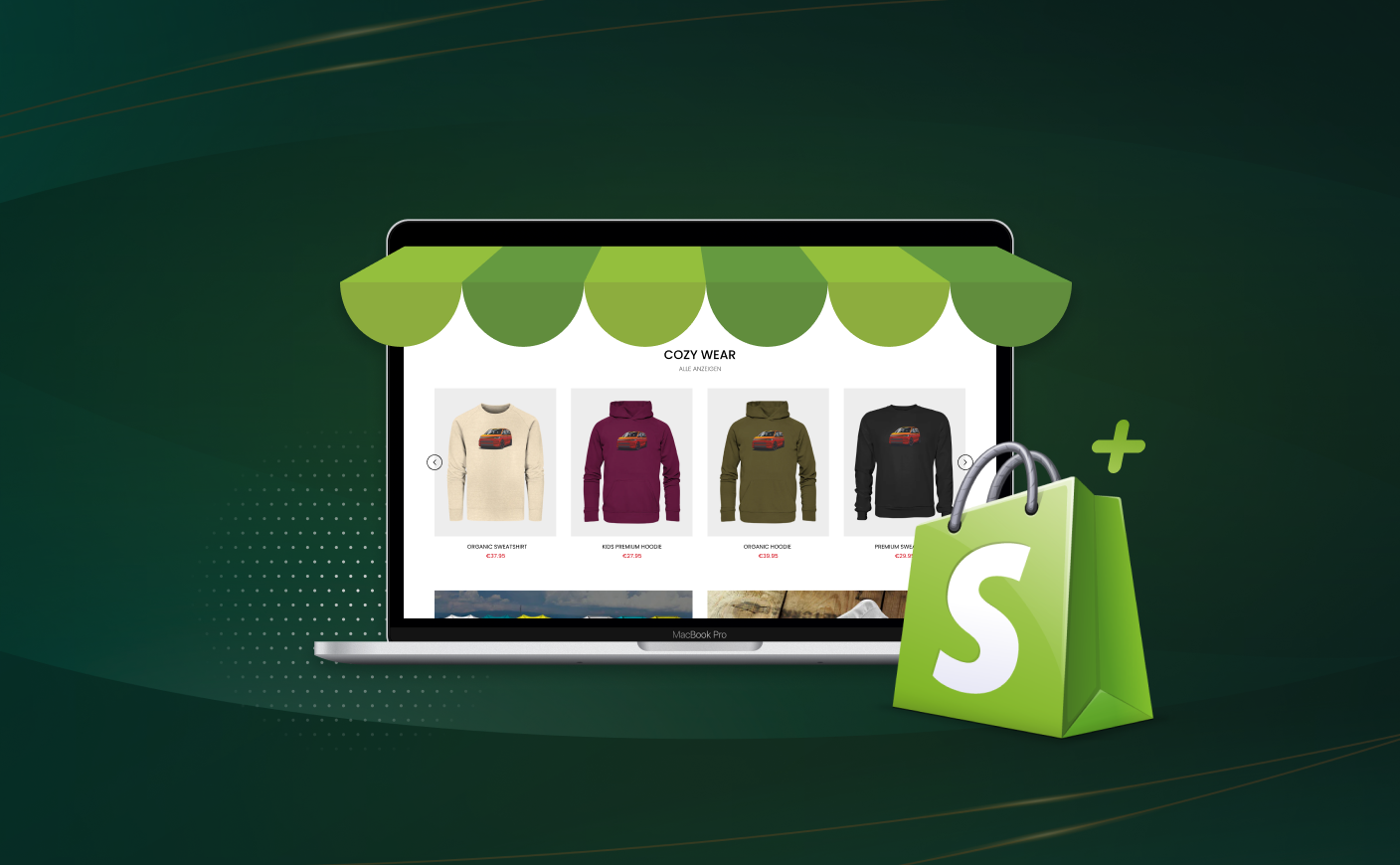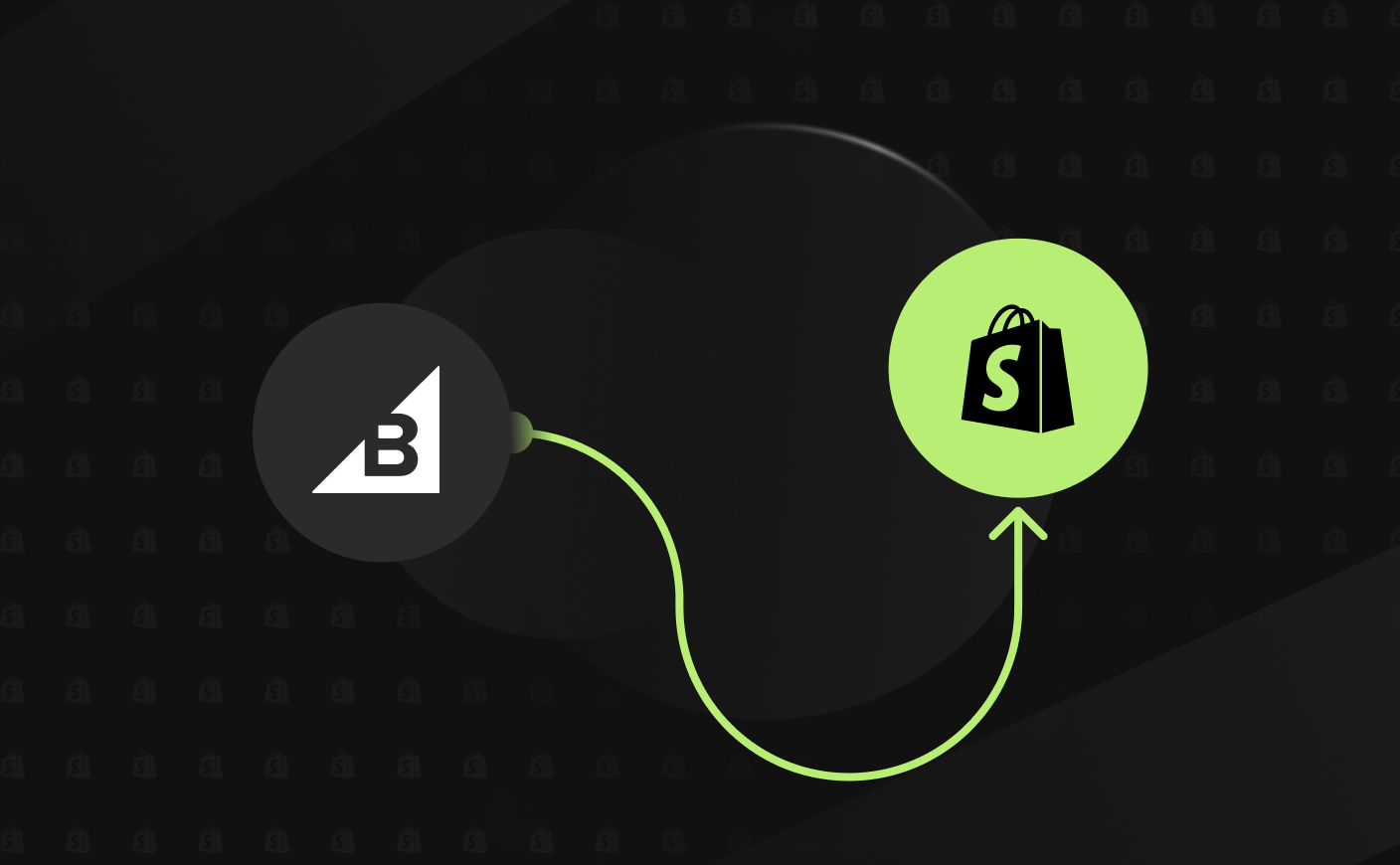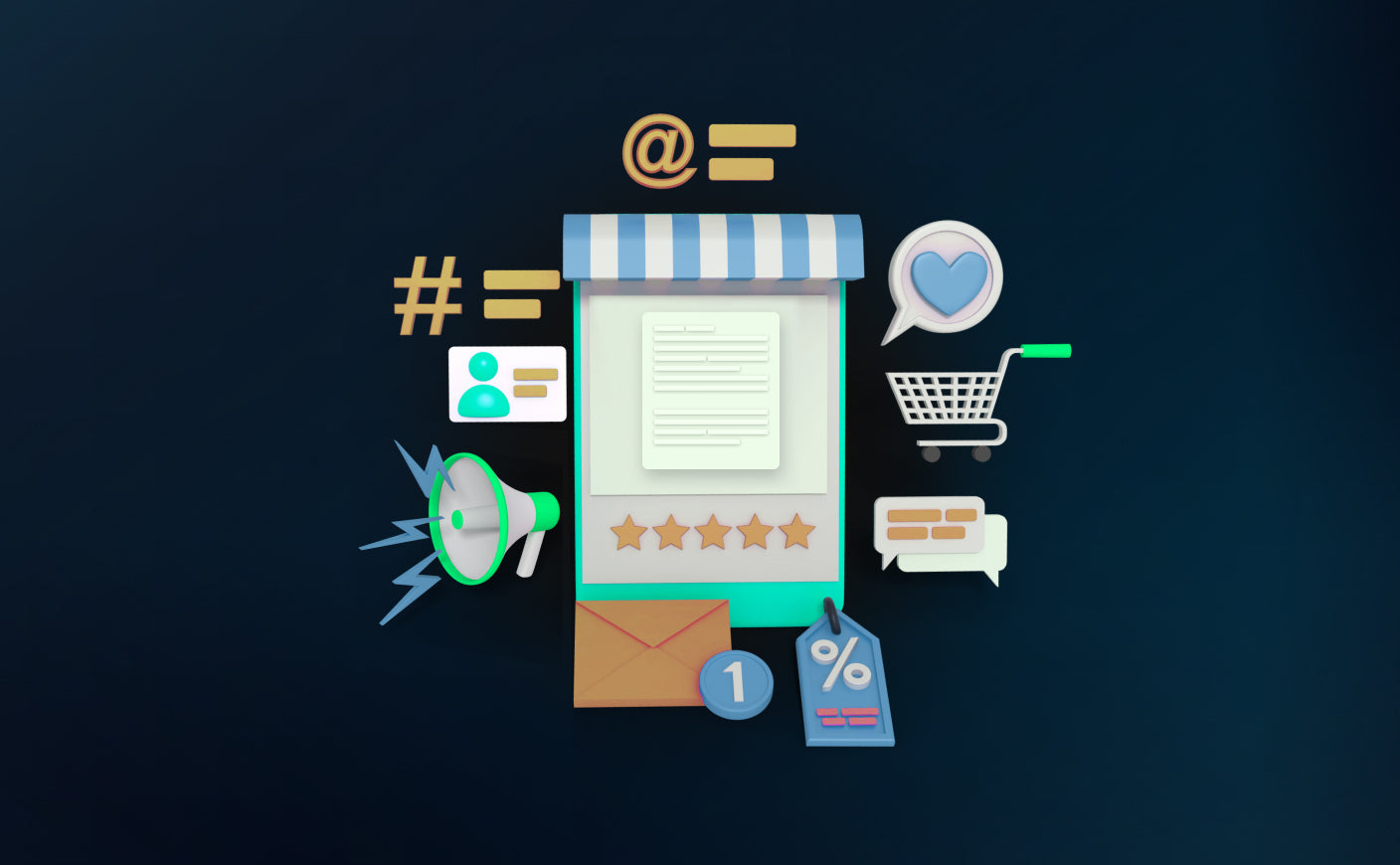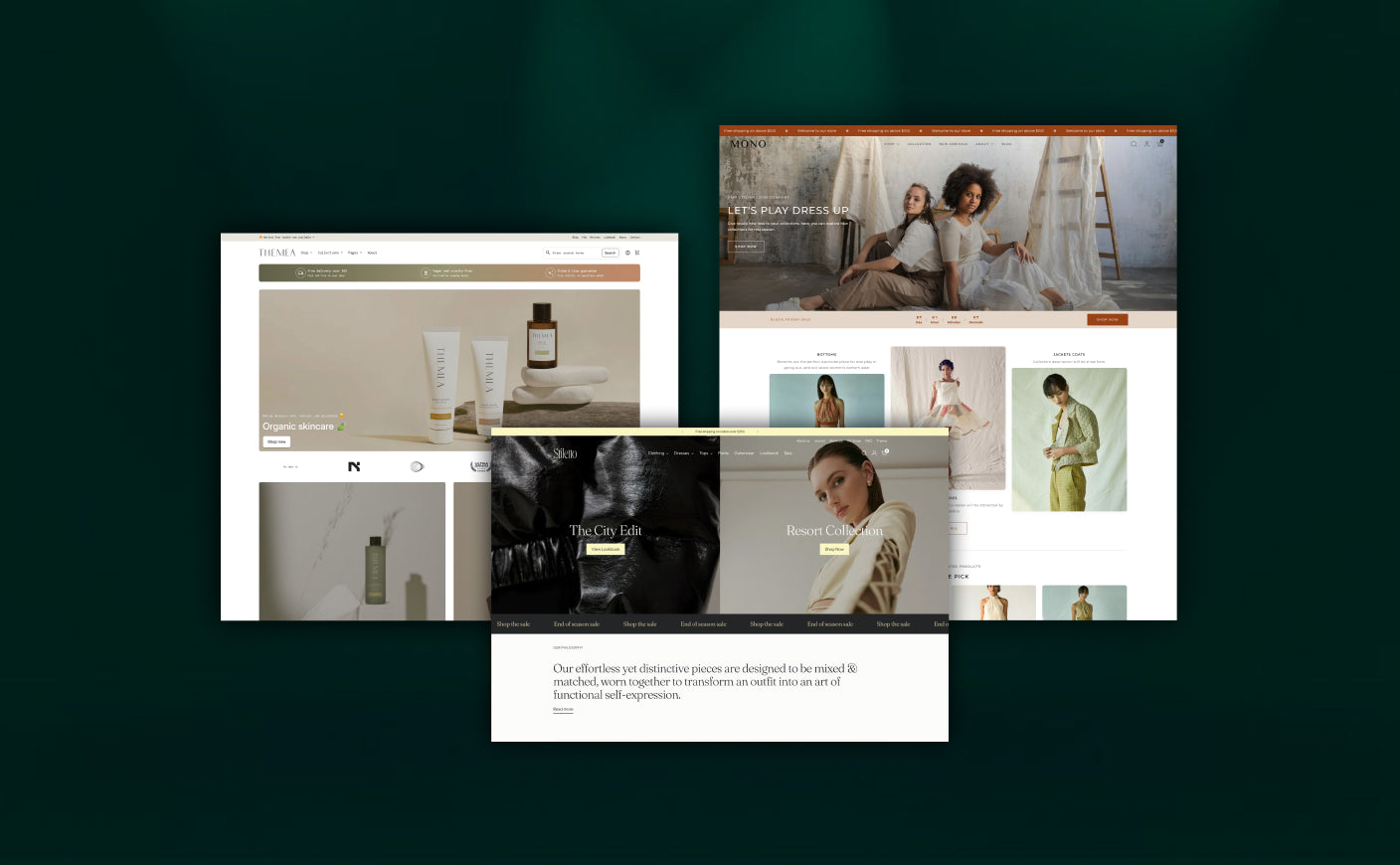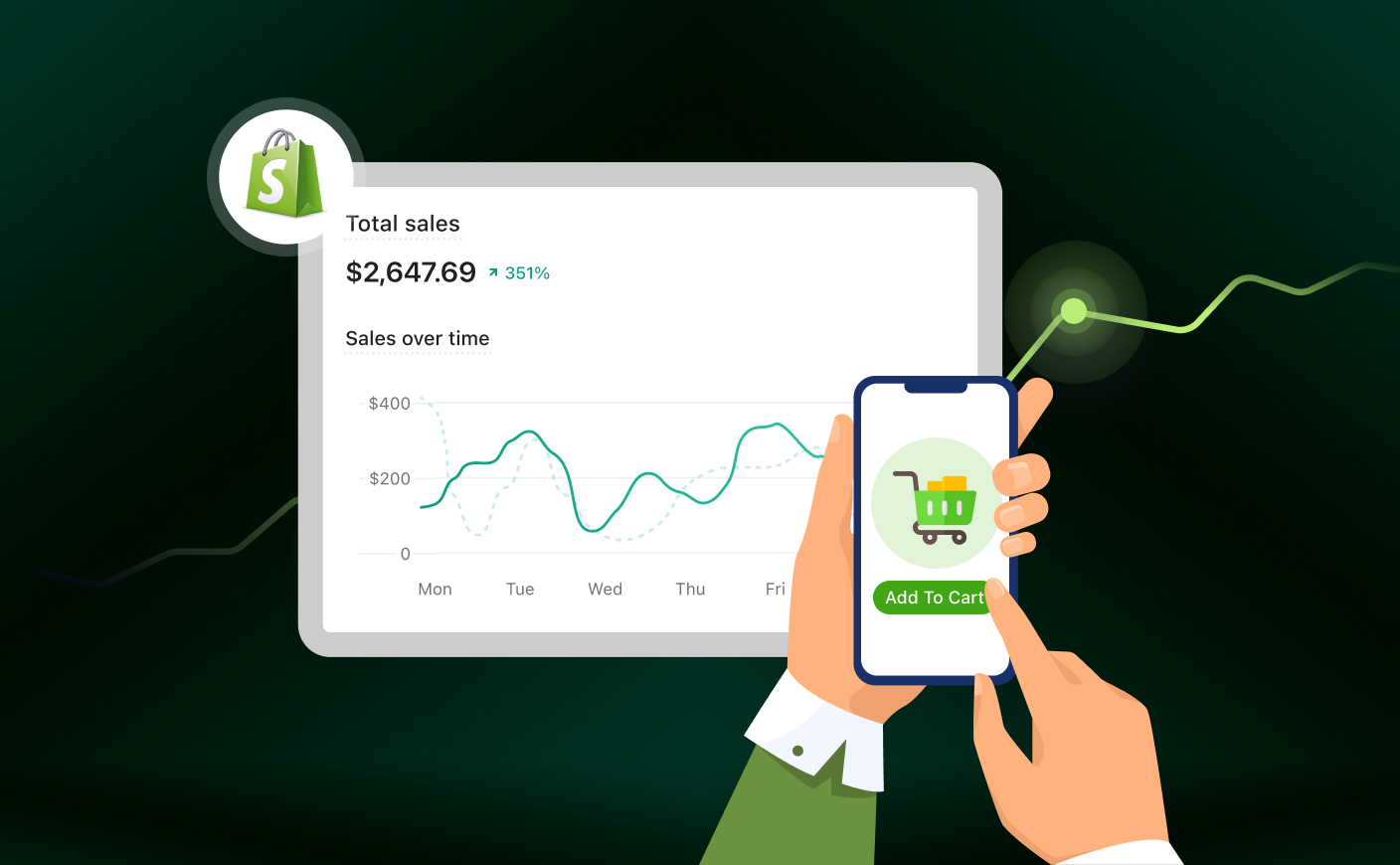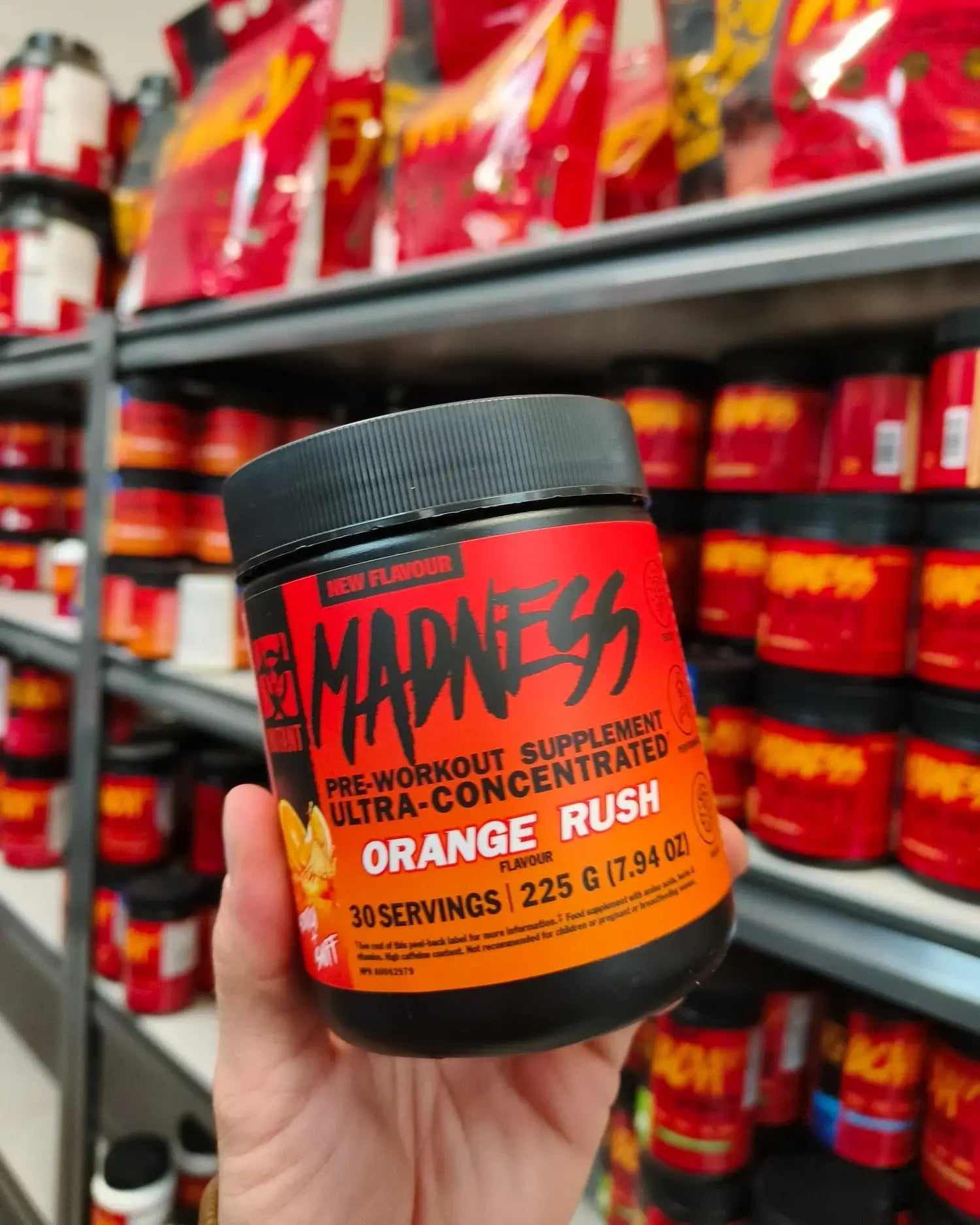Why B2B Ecommerce Needs a D2C Mindset in 2025
B2B Ecommerce
shopify B2B ecommerce
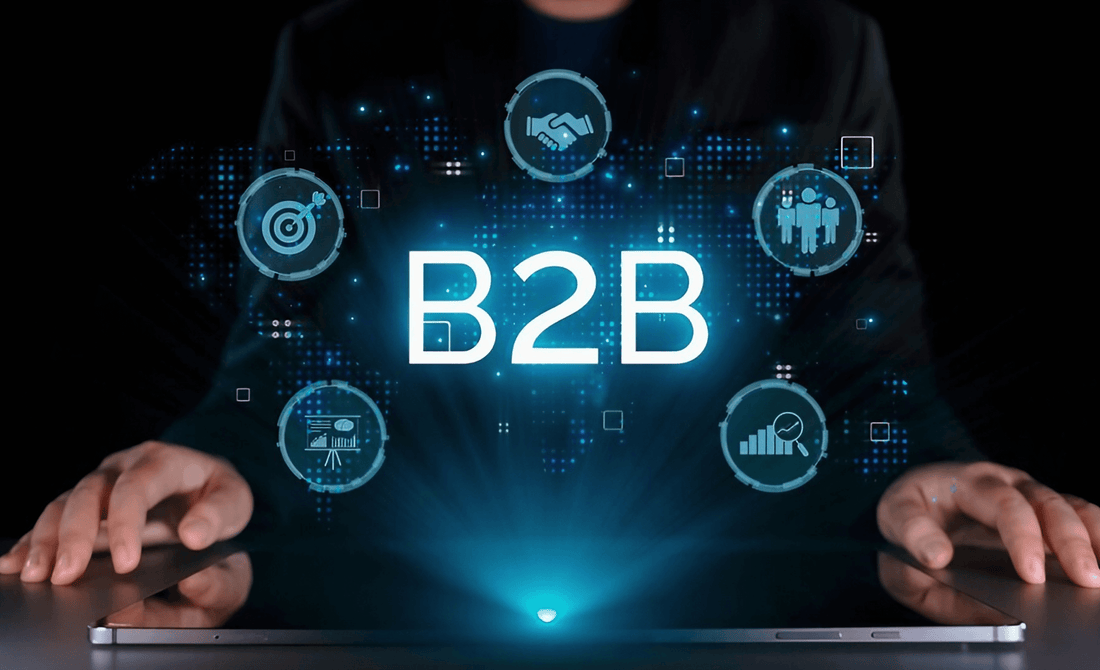
The global ecommerce sales is expected to reach over $3 billion by 2027 (source: bigcommerce). This will far outpace the B2C growth and rewrite the rules of digital commerce.
What was once a domain dominated by spreadsheets, manual orders, and faxed purchase forms is now transforming into sleek stores, personalized buyer journeys, and real-time transactions.
The line between B2B and D2C isn’t just blurring, it’s practically disappearing.
However, this shift is more about mindset than technology. Today’s B2B buyers expect a personalized experience even while buying a pair of sneakers online. They want intuitive product discovery, smooth checkout, responsive support, and personalized recommendations.
That’s the D2C way — and it’s exactly what B2B brands need to adapt if they want to stay competitive in 2025 and beyond.
Adopting a D2C mindset means rethinking how you sell, market, and serve your customers. It’s about building relationships, not just fulfilling orders.
More importantly, it’s a smart move that can give you millions in revenue. By making things smoother for your customers and using better tech, you’ll run your store more efficiently and improve growth.
In this blog, we’ll break down why B2B ecommerce businesses in the U.S. must adopt a D2C mindset in 2025, and how they can start that transformation today.
Whether you’re a manufacturer, wholesaler, or a legacy distributor, the playbook is changing — and the time to adapt is now.
Understanding the B2B Ecommerce Landscape in 2025
The B2B ecommerce landscape is booming - transforming faster than most brands can keep up.
One of the biggest catalysts for this change is the new generation of buyers. Millennials and Gen Z are now leading the charge in B2B purchasing roles. These are the people who grew up with one-click checkouts, personalized ads, and next-day delivery. So when they step into a B2B environment that feels clunky, outdated, or overly complicated, they bounce. Fast.
These younger buyers don’t want to jump on sales calls to get basic product info. They don’t want to email back and forth to confirm pricing.
All they want is quick access to your product catalog and clear, upfront pricing.
On top of that, they expect an easy checkout and the freedom to manage everything on their own through a self-service portal.
And they want to do it all from their phone.
Yes, mobile-first B2B purchasing is here - and they are gaining a lot of attention. These days, procurement managers are flipping through supplier catalogs on their iPads right in meetings. Decision-makers? They're approving quotes on their phones while out and about, mobile is the new normal in B2B buying.
These shifts signal one thing loud and clear: B2B brands need to rethink how they engage, convert, and retain modern buyers. The companies that will win in 2025 are the ones that adopt the speed, personalization, and user experience typically seen in D2C models, and they’re doing it by design, not default.
Core Principles of a D2C Mindset for B2B Ecommerce
Adapting D2C principles does not only come with surface-level changes - it is also about transforming the core operating model of a B2B Ecommerce brand. In simple words, you give more priority to digital convenience, personalized engagement, and agile growth.
Let us break down the exact principles a B2B brand must adapt in 2025 with the required actions that you can take:
#1 Prioritizing Customer Centric Experience

Old Way: Bulk discounts, rigid payment terms, transactional support.
D2C Way: Tailored experiences, loyalty-driven strategies, personalized support.
Today’s B2B buyers expect the same level of attention and personalization that they get from brands like Amazon and Apple. Basically what we are trying to say is:
- Mapping out buyer personas (e.g., procurement managers looking for speed and cost efficiency, small business owners prioritizing value and service).
- Using tools like Shopify’s B2B Ecommerce customer segmentation and custom price lists to create account-based experiences.
- Offering loyalty programs even in a B2B context. For instance, Grainger’s customer rewards program provides discounts and special perks based on order frequency and volume.
Action that you can take:
Leverage Shopify’s company profiles and custom integrations so that you can deliver - personalized pricing, payment terms, and product recommendations - all tailored and customized for individual groups and clients.
Also read: The real reason why US luxury brands trust Shopify Plus
#2 Streamlining User Experience by Removing Friction from Complex Workflows

Old Way: Product catalogs in PDF format, manual quote requests, clunky ordering portals.
D2C Way: Modern interfaces, real-time self-service tools, and frictionless mobile access.
A typical B2B order typically involves hundreds of SKUs, multiple stakeholders, and multiple approval processes. Without a proper UX optimization, this can become very difficult.
So what can you do? Let’s check them out:
- Self-service quoting systems (Shopify Plus supports this via apps like Request a Quote by Globo or B2B apps like SparkLayer).
- Bulk ordering tools that allow CSV uploads, quantity selectors by variant, or reorder-from-history features.
- Mobile-first UX — B2B Ecommerce brands like Fastenal and Uline have already optimized their sites for mobile procurement. This allows buyers to reorder products, approve quotes, or access real-time inventory from the warehouse floor.
Action that you can take:
You can integrate your Shopify store with tools like Bundle Builder for custom B2B kits or Shopify Flow to automate order approvals and workflows. Another tip is to leverage responsive themes that ensure a smooth experience across all devices.
Also read: Top Shopify marketing automation tools for 2025
#3 Letting Analytics Help You With Strategy Making Decisions

Old Way: Gut feelings, lagging reports, and spreadsheets.
D2C Way: Real-time analytics, AI insights, and behavioral segmentation.
D2C brands are all about data - and so should be your B2B Ecommerce. With the right infrastructure, you can:
- Use Shopify’s built-in analytics or tools like Triple Whale to monitor buyer behavior: what products are frequently bundled, which customers have high repeat value, where drop-offs occur.
- Use AI-powered demand forecasting (e.g., via Inventory Planner or Brightpearl) to optimize stock levels based on customer behavior trends.
- Build sales funnels that are personalized based on past actions — for example, showing "related products" based on order frequency, or sending replenishment reminders for consumables.
For instance, B2B Ecommerce brand Essity uses AI to analyze hospital and clinic consumption patterns to automatically replenish hygiene products. This helps to reduce stockouts and improve customer trust.
Action that you can take:
Sync Shopify with your CRM and ERP systems to centralize data and use analytics tools for smarter marketing, purchasing, and sales strategies.
Also read: 10 game changing ERP integration solutions for 2025
#4 Humanizing The B2B Purchase Experience

Old Way: Product specs, datasheets, and pricing tiers.
D2C Way: Emotional connection, mission-driven messaging, and strong visual identity.
The rational side of B2B is still important, but increasingly, emotional differentiation is what sets top brands apart. Buyers want to align with vendors who share their values — be it sustainability, innovation, or social impact.
This is how you can implement storytelling:
- Highlight your mission and values on product pages, not just the "About Us" section.
- Share behind-the-scenes content (e.g., how your products are made, or your team's dedication to quality).
- Use platforms like Shopify’s Sections Everywhere to build dynamic content blocks. This will showcase value-added benefits — certifications, customer testimonials, or case studies.
Action that you can take:
Leverage branded content and Shopify-integrated blog features - to share success stories, sustainability metrics, or community involvement - directly on your store.
#5 Building a Future-Proof B2B Ecommerce Operation

Old Way: Legacy ERP systems, custom-coded websites, slow release cycles.
D2C Way: Agile platforms, API-first architecture, fast time-to-market.
The ecommerce landscape is constantly changing. It can be due to supply chain disruptions, regulatory shifts, or changing buyer requirements. Therefore every brand needs a system that will allow them to scale swiftly without slowing them down.
This is what an efficient agility looks like:
- Quickly launching new sales channels — Shopify lets you test D2C, B2B, wholesale, and international sales from a single backend.
- APIs and headless commerce give you flexibility to create unique buying experiences while keeping your tech stack lightweight and scalable.
- Third-party integrations with ERPs, CRMs, and inventory management systems. This keeps operations aligned without custom development issues.
Action that you can take:
Audit your current technology and identify the issues involved. We suggest shifting to Shopify Plus since it supports rapid adaptation through integrations, workflows, and automation.
Key Strategies for Implementing a D2C Mindset in B2B Ecommerce
Understanding the principles of D2C is one thing - implementing them in a real life scenario is a whole different ballgame. However, with the right tools and technology, you can evolve faster and more efficiently.
Let’s start:
#1 Optimize the Digital Storefront

Your online store is literally everything - your most powerful sales rep, brand ambassador, and a conversion engine.
Here’s how you can optimize your store for maximum performance and scalability:
Use Shopify Plus for Scalability And Flexibility
This platform is perfect for modern B2B Ecommerce since it allows you to:
- Run both B2B and D2C operations from the same backend, making management easier.
- Create dedicated B2B stores with unique design, product availability, and payment terms.
- Automate complex B2B workflows with tools like Shopify Flow, reducing manual workload and minimizing errors.
Our Recommendation
Use Shopify’s B2B on Shopify features (available on Plus) to set up custom stores for different buyer groups — each with personalized product visibility, pricing rules, and ordering logic.
Also read: A guide to split testing your pricing strategy
Implement Advances B2B Features
Today’s buyers literally deliver everything their competitor brands are offering. Shopify lets you deliver everything including:
- Customer-specific pricing: Set unique rates by account or group to reflect negotiated deals.
- Tiered discounts: Reward larger order volumes with automatic pricing breaks — similar to subscription-based pricing models in SaaS.
- Private catalogs: Hide or show products based on customer type, order history, or industry.
Focus on Performance and SEO
No matter what your niche is, your customers are still looking for you on Google. That is why your store must do these two things - load fast and rank high.
- Speed: Shopify’s hosting stack delivers fast load times — which is crucial, especially for mobile buyers.
- SEO: Optimize every category page, product detail page, and resource hub. You can do this by integrating keyword-rich content, internal links, schema markup, and fast mobile performance.
Leverage Shopify’s Hydrogen + Oxygen stack for custom headless commerce builds if you want ultimate speed and flexibility. This is especially useful if you’re targeting enterprise buyers with large catalogs and high site traffic.
#2 Improve Personalization With Technology

Personalization is one factor that has become a competitive necessity in today’s time.
Here’s how you can bring D2C level personalization in your B2B business:
Leverage AI-Driven Tools for Product Discovery
One of the easiest wins for a brand is to help their customer find things faster - or better yet, suggesting products that they didn’t know they needed.
The Shopify plus platform allows you to integrate:
Shopify’s native product recommendations based on purchase history and product similarities.
AI-driven apps like LimeSpot, Rebuy, or Nosto, which allow you to create -
- Smart upsell and cross-sell
- Dynamic bundles based on industry or role
- Post-purchase offers tailored to buyer behavior
These tools not only improve aesthetics but also your average order value (AOV). Additionally, they also reduce churn by making every interaction feel personalized.
Use CRM & Segmentation to Deliver Targeted Experiences
The modern B2B Ecommerce buyer doesn’t want spammy email blasts or generic content. They want relevant messaging that acknowledges who they are, what they need, and when they need it.
To enable this:
1.Sync Shopify with a CRM like HubSpot, Klaviyo, or Salesforce to track buyer behavior and preferences.
2.Segment your audience based on:
- Industry
- Job role
- Purchase frequency
- Average order size
3.Use that data to send hyper-targeted campaigns like:
- "Reorder Reminders" for consumables
- “You Might Also Need” emails post-purchase
- “Exclusive Pricing” emails for your top accounts
Our Recommendation
Use Shopify Flow to trigger these sequences automatically. For instance, when a customer’s last purchase hits the 30-day mark, they get a personalized reorder email with a product bundle suggestion.
#3 Streamline Operations

One of the most overlooked advantages of having a D2C mindset is having operational efficiency. Behind the personalized store and smooth user experience is a well-oiled backend that ensures fast order fulfillment, accurate inventory updates, and easy payments.
Let’s see how B2B Ecommerce stores can use Shopify and modern integrations to streamline the entire buying and fulfillment journey.
Automate Order Processing, Invoicing & Payment Terms
Manual order entry, paper invoices, and back-and-forth emails for approvals are relics of the past. With Shopify’s growing suite of B2B tools, much of the purchasing workflow can now be automated.
Here’s what’s possible using Shopify Plus and Shopify’s B2B features:
- Automated invoice generation upon order placement, reducing accounting bottlenecks.
- Custom payment terms per customer account (e.g., Net 30, Net 60), built into the checkout experience.
- Auto-approval or routing of purchase orders using Shopify Flow, ensuring large or custom orders don’t get stuck in someone’s inbox.
Our Recommendation
Use the “Payment Terms” feature in Shopify Plus to assign net terms to individual companies. Thus, B2B Ecommerce buyers can place orders without immediate payment and still go through a fast, streamlined checkout.
Smooth Integration With ERP And Inventory Systems
For growing B2B brands, the tech stack doesn’t stop at ecommerce — it has to connect to your back office. That’s where ERP integration becomes mission-critical.
With Shopify Plus, you can integrate with major ERPs like:
- NetSuite
- Microsoft Dynamics
- SAP
- Brightpearl
- And more via connectors like Celigo, Patchworks, or VL OMNI
This allows you to:
- Sync inventory in real-time across multiple warehouses or fulfillment centers.
- Keep financial data accurate for accounting, budgeting, and forecasting.
- Enable dropshipping, 3PLs, or hybrid fulfillment models without disrupting the frontend buyer experience.
Offer Flexible B2B Payment Options
One of the biggest differentiators in B2B ecommerce is offering payment flexibility that fits business cash flows. A rigid, credit card-only checkout won’t cut it for corporate buyers managing budgets and internal approvals.
With Shopify Plus, you can:
- Offer net terms checkout (e.g., Net 15/30/60) natively through Shopify’s B2B features.
- Use third-party financing options like Resolve, Affirm for Business, or B2B BNPL providers that allow clients to pay over time without burdening your cash flow.
- Set up multi-currency and multi-payment methods for international B2B customers via Shopify Markets.
Our Recommendation
If you offer financing or extended terms, highlight them early in the buyer journey (e.g., on product or category pages) to increase conversion. Many buyers make faster decisions when cash flow isn’t a constraint.
#4 Build a Smooth Omnichannel Experience

Today’s B2B buyers are not just limited to one channel - they’re engaging with your brand across websites, trade shows, field sales reps, mobile devices, and even social platforms.
The brands that win are those that don’t treat these as separate silos but instead create one unified experience.
Sync Online and Offline Touchpoints
Whether a prospect is first introduced to your brand at a trade show, through a LinkedIn ad, or by a field sales rep, their journey should be connected and consistent.
Here’s how you can make that happen:
- Use Shopify to ensure every product, promotion, and catalog update is reflected across all channels, in real-time.
- Equip your sales team with mobile tools that integrate with your ecommerce data. This allows them to access order history, pricing, and inventory on the go.
- Create a centralized customer profile that tracks engagement across digital and physical touchpoints (website visits, quotes, purchases, and rep interactions).
Maintain Consistent Branding and Pricing
One of the quickest ways to lose trust is offering different pricing or inconsistent experiences across platforms.
To avoid this:
- Use Shopify’s custom B2B Ecommerce store and price lists to control pricing visibility per customer type.
- Create unified brand assets — product descriptions, imagery, brand messaging — and sync them across your ecommerce store, POS, and printed materials.
Our Recommendation
Implement Shopify’s Markets feature to manage localization, currency, and pricing rules for different regions — so your global customers also get a smooth, unified experience.
#5 Use Shopify POS for In-Person Sales

Industry events, expos, and pop-up activations are still key parts of the B2B sales process — especially in verticals like manufacturing, healthcare, and wholesale distribution.
With Shopify POS Pro, you can:
- Process orders, accept payments, and apply customer-specific pricing on the spot.
- Pull up product data, past orders, and inventory availability — all in real time.
- Sync offline orders with your Shopify backend instantly, so there’s no manual reconciling later.
#6 Leverage Social Proof and Reviews

In B2C ecommerce, we’re used to seeing product reviews, influencer endorsements, and user-generated content driving your purchase decisions. B2B might be a different world, but the human behind the procurement desk still craves validation and reassurance. This is especially needed when making high-stakes purchasing decisions.
That’s where social proof becomes a game-changer.
Let’s see how a B2B business can strategically integrate testimonials, reviews, and trust signals to build credibility and accelerate conversions.
Collect & Showcase Customer Testimonials Strategically
One glowing review from a respected customer in your industry can often do more than a full-on sales pitch. But instead of just dropping a few quotes on a testimonial page no one clicks on, make them part of the shopping journey.
Here’s how:
- Place testimonials and star ratings on product pages, especially for high-volume SKUs.
- Add customer logos and short quotes on your homepage or landing pages — these act like visual trust triggers.
- Use Shopify apps like Stamped.io, Judge.me, or Yotpo to collect and display verified reviews, even for B2B orders.
Our Recommendation
Request reviews not just on products but on the buying experience itself — how fast shipping was, how easy reordering was, or how helpful your sales reps were. These insights help future buyers feel more confident.
Turn Case Studies into Sales Assets
For complex or high-value products, testimonials might not be enough. That’s when detailed case studies come into play. Think of them as your B2B version of influencer marketing — with results.
Build case studies that show:
- The challenge a customer faced
- The solution your product or service offered
- The outcome, ideally with real metrics (e.g., "Reduced lead time by 40%", "Increased production uptime by 20%")
Then:
- Feature these on your Shopify store using a "Customer Stories" section.
- Use them in email sequences to lead in similar industries.
- Turn them into social media content or downloadable PDFs your sales team can share.
Highlight Certifications, Awards & Industry Recognition
In B2B, trust is currency. Customers want to know they’re buying from a business that is credible, compliant, and well-regarded in its space.
On your Shopify store, make sure to:
- Display industry certifications (ISO, FDA, CE, etc.) prominently on product pages or footers.
- Highlight awards or accolades your brand has received.
- Mention partnerships with recognized organizations or suppliers — e.g., "Authorized Distributor of XYZ", or “Proud partner of LEED-certified projects.”
Our Recommendation
Add a “Trust Badges” section near your checkout to ease final-purchase hesitation, especially for new buyers placing large orders.
Also read: How social signals impact Shopify SEO
#7 Prioritize Speed and Convenience

In a world where Amazon has set the bar for fast, frictionless buying, today’s B2B buyers expect nothing less — even when ordering industrial parts, bulk materials, or wholesale goods.
When you treat your B2B buyers like modern D2C consumers, you're not just improving CX — you're reducing churn, increasing AOV, and shortening the sales cycle.
Offer Same-Day or Next-Day Shipping for Urgent Orders
Procurement teams and small business owners often deal with unexpected demands or supply chain breakdowns. If you can be the brand that saves the day with fast shipping, you’re not just fulfilling an order — you’re building loyalty.
Here’s how to make it work:
- Leverage regional warehouses or 3PLs integrated with Shopify Plus to fulfill orders closer to the buyer.
- Use apps like ShipStation, ShipBob, or Easyship to automate fulfillment logic based on location and inventory.
- Clearly display shipping options on product pages — and even upsell faster delivery as a premium service for urgent needs.
Simplify Checkout with One-Click Reordering & Saved Payment Methods
Reordering in B2B shouldn’t feel like starting from scratch. Whether it’s office supplies or bulk chemicals, your repeat buyers want to skip the friction and get what they need — fast.
With Shopify’s B2B features and third-party extensions, you can:
- Enable one-click reorder from the buyer’s account dashboard.
- Allow users to save multiple shipping addresses, payment methods, and purchase orders for faster checkout.
- Customize checkout flows per customer type, using Shopify Scripts to auto-apply pricing tiers or preferred shipping methods.
Our Recommendation
Add a "Reorder" button in post-purchase emails or inside the buyer dashboard to keep them coming back without adding friction.
Provide 24/7 Support via Chatbots or Live Agents
Even the best digital storefront won’t replace real-time reassurance during critical buying decisions. Especially in B2B, where orders are complex and timelines are tight, responsive support becomes part of your product.
Here’s how to scale service without adding headcount:
- Use Shopify Inbox or integrations like Gorgias to centralize live chat, email, and social DMs into one place.
- Implement AI-powered chatbots (like Tidio or Zendesk AI) to handle FAQs, order status, and even product recommendations 24/7.
- Offer scheduled callbacks or meetings for high-value buyers needing pre-sale guidance.
Our Recommendation
Create custom chatbot flows for different personas, for example, a procurement officer vs. a technical buyer to guide them more effectively through the purchase journey.
Overcoming Common Objections and Challenges
Adopting a D2C mindset in the B2B space sounds great in theory — but the reality is, change comes with hesitation. And that’s fair. Whether you’re a procurement-heavy business or a manufacturer selling wholesale, shifting how you sell and serve customers can feel like a leap.
Here’s how to confidently address the most common objections and internal challenges we hear from B2B brands — and how to turn them into growth opportunities.
Objection: “Our buyers don’t need a D2C-like experience.”
Reality check:
B2B buyers do want modern, smooth experiences — they just don’t always say it out loud. The days of faxes, PDFs, and endless back-and-forth emails are fading fast.
The counterpoint:
- Millennials and Gen Z now make up over 60% of B2B buying teams. These digital natives expect intuitive, self-service platforms that work like Amazon or Apple.
- A D2C-like experience doesn’t mean stripping away the human touch — it means giving buyers options and convenience, whether they want to self-serve or connect with your team.
Objection: “Implementing new systems is too costly.”
Understandable — but short-sighted.
Digital transformation has a price tag, sure. But not evolving your customer experience? That’s even more expensive in the long run.
The counterpoint:
- Shopify Plus offers enterprise-level B2B functionality at a fraction of the cost of custom platforms or legacy ERP ecomm add-ons.
- Shopify’s app ecosystem eliminates the need for expensive custom development — meaning faster time-to-market and lower technical debt.
- Most importantly, the ROI comes from long-term gains: increased order frequency, larger cart sizes, reduced operational friction, and happier customers.
Objection: “Our team lacks the expertise to manage this.”
That’s where expert partners come in.
The counterpoint:
- You don’t need to rebuild your tech team — you need the right agency partner who understands B2B, Shopify, and D2C thinking.
- Our agency specializes in guiding B2B brands through this exact transformation, from platform migration and custom integrations to UX design and post-launch optimization.
- We make it painless with a phased approach, hands-on training, and ongoing support — so your internal team can stay focused on what they do best.
Challenge: Resistance to Change
Change management can derail even the most well-intentioned projects — especially in companies with legacy systems and well-established sales processes.
How to win buy-in:
- Start small. Run a pilot program with one product line or customer segment. Use early results to get executive support.
- Show stakeholders how this improves buyer satisfaction, reduces sales friction, and drives revenue.
- Reframe the mindset: This isn’t about replacing people — it’s about empowering teams with better tools and smarter data.
Challenge: Data Silos & Disconnected Systems
Disjointed tools and departments lead to inefficiencies, blind spots, and missed opportunities. Many B2B brands struggle here.
How to solve it:
- Shopify integrates easily with leading ERP, CRM, and inventory platforms — from NetSuite and SAP to HubSpot and Salesforce.
- With centralized data, you gain a 360° view of your customers, making personalized experiences, smarter marketing, and accurate forecasting possible.
- Unified data reduces manual entry errors and frees up your team to focus on strategy instead of spreadsheets.
The Bottom Line
Here’s the bottom line: adopting a D2C-style mindset gives you the tools to grow — smartly and sustainably.
- Better buying experiences → happier customers
- Streamlined ops → faster order cycles, lower costs
- More data → smarter decisions
- Stronger brand → higher margins, better retention
We’ve seen it first-hand with our clients. It’s not about changing everything overnight. It’s about building a business that’s ready for whatever comes next.
If you take one thing away from this: Don’t underestimate your buyer. They’re tech-savvy, time-starved, and have high expectations — and you have every opportunity to meet (and exceed) them.
So here’s your 2025 playbook: Think like a D2C brand. Move with agility. Lead with experience.
Need help making that shift? That’s exactly what we do. Let’s build your next big chapter — together.
CrawlApps
At CrawlApps, we don’t just build Shopify stores—we create experiences that sell. We’re a bunch of problem-solvers who love turning ideas into stores that actually converts. Whether it’s fixing what’s broken or building something from scratch, we make sure every detail works in your favor. No fluff, no jargon—just real solutions that help your business grow. If you’re serious about Shopify, you’ll feel right at home with us.



